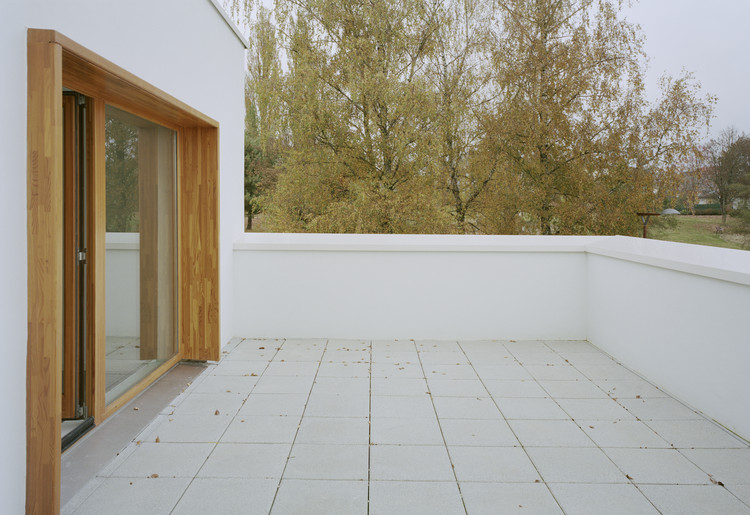
-
Architects: ateliers O-S architectes
- Area: 3583 m²
- Year: 2016
-
Photographs:Cyrille Weiner
-
Lead Architects: Vincent Baur, Guillaume Colboc, Gaël Le Nouëne

Text description provided by the architects. The 38 housing project is located in Charleville-Mézières next to the Belgian border. This is made up of collective apartments of different sizes, superimposed and overlapping.

A Neighborhood Scale
The challenge of this project is to settle in a heterogeneous context, composed of varied architecture: from the single-family house to the collective appartments building. The ambition is to reconcile these two types of dwelling radically different in order to create a coherent urban fabric . The project then proposes an intermediate density, halfway between the collective and individual housing.

The public space is organized around four buildings whose location ensures respect for the landscape quality of the site thanks to visual breakthroughs. Indeed, the project unfolds over the entire surface of the site, in reaction to the building of 100 dwellings in the west side of the site that obstructs space.

The west and east parts of the project are aligned along existing footpaths. The two others are parallel to the street.
Between these « islets », are organized the parking lots, common spaces and small individual gardens. The character of the project is given by a horizontality punctuated of urban framing towards the distant landscape.

The 38-units program is organized by "household" of two superimposed units. We have 2 T2, 18 T3, 12 T4 and 6 T5. All the T4 and T5 have their living rooms on the garden level, while the majority of the T3 and the two T2 are articulated on the upper floors. Access to housing is made from the garden for dwellings on the ground floor and from the public road for the others.

Density is one of the quality of this urban form offering spaces to potential open and multiple uses for a shared neighborhood life.

Architectural Principles
The aim of this project is to offer to each appartment a private outdoor space, garden or terrace, proportional to the surface of the dwelling. The general morphology is varied, ranging from one to two floors above groundfloor, and non-linear in order to create a rhythm on the street to be between individual and collective housing typology.

The facades are covered by a thick mineral coating with a special application technique: hand made vertical strips reinforced the façades.






















